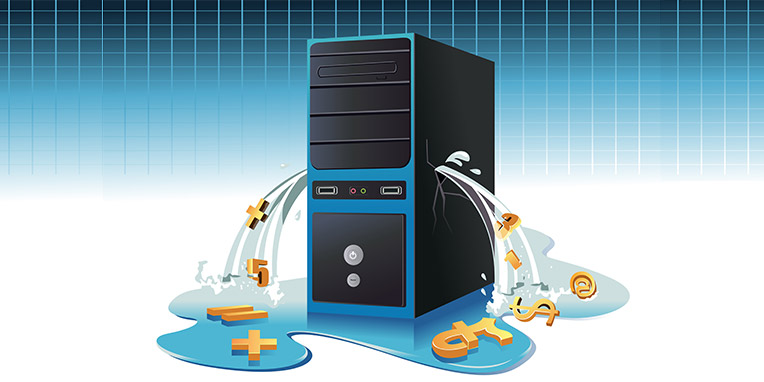More businesses are offering company smartphones, tablets and laptops to allow their employees to work remotely. Ensure your employees are using them safely so as not to compromise your company’s cybersecurity.
Remote working can bring massive benefits to both employees and companies. It allows flexibility that brings better work/life balance and may also increase productivity:
“There’s less stress [than] in the office and the workplace. People feel empowered to work in a way that suits them and suits the business.”
– Daryl Wilkinson, group head of digital development at Nationwide Building Society
However, with company devices being used at various locations, the threat of hacks increases, as experienced by Staffordshire University in 2014 when the data of 125,000 students was stolen from a laptop left in a car.
So how do you secure company devices? Here are five ways.
1) Make Devices More Secure With 2-Step Authentication
A great way to increase the security of remote devices is 2-step authentication. This usually involves the user entering a password to access the device, then a PIN code. The added layer of security creates millions of password variations, making it very tough for hackers to get in and steal data.
2) Implement Mobile Device Management (MDM)
Another way to secure company devices is by implementing Mobile Device Management (MDM) software. MDM allows companies to remotely manage and secure devices, including laptops, smartphones, and tablets, from a central platform. With MDM, IT administrators can control device access, configure settings, and enforce security policies, such as requiring passcodes, encrypting data, and remotely wiping data from lost or stolen devices. MDM can also help detect and prevent unauthorized access to company resources, such as email and data stored in the cloud.
2) Cloud Storage
Rather than having your employees save all their files and sensitive documents to their devices, set up a cloud-based server in which all files are stored. In that case, should a device be stolen, there won’t be any files saved on the hard drive to be taken. It’ll also mean the data is backed up, so employees won’t have to worry about redoing all their hard work.
3) Ban Unknown USB Drives
USBs are known to be an easy way for hackers to unleash malware onto devices in order to take control of them. In fact you may have read in the news recently that IBM decided to ban employees from using USB devices at work. Make it a policy that the only USB devices to be plugged in are those that have been distributed by the company. If workers use personal USBs, make sure the IT staff takes a look at them first to ensure there’s no malicious software lurking in the shadows.
4) Educate and Set the Rules
Before you distribute devices to be used remotely, have a set of written policies that includes the above advice. Educate your employees about the dangers that lurk in the world outside the office and ensure they’re well aware that remotely working requires a level of responsibility on their part.
5) Monitor All Remote Devices
With employee computer monitoring software becoming more advanced, you can now monitor all remote devices from your office desk. Software such as KnowIT can be remotely installed onto all office devices, wherever they’re used.
You’ll be able to monitor what files are being created and accessed, as well as USBs plugged in, networks joined, and emails sent and received. There’s a whole wealth of features beyond those mentioned that will provide well needed security, which you can learn more about by clicking here.
Before you go… we’re genuinely intrigued to find out:
What policies does your company employ for keeping remote workers secure?
Let us know in the comments section below, and one of us at Digital Endpoint will reply.
